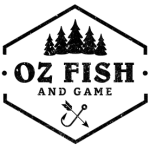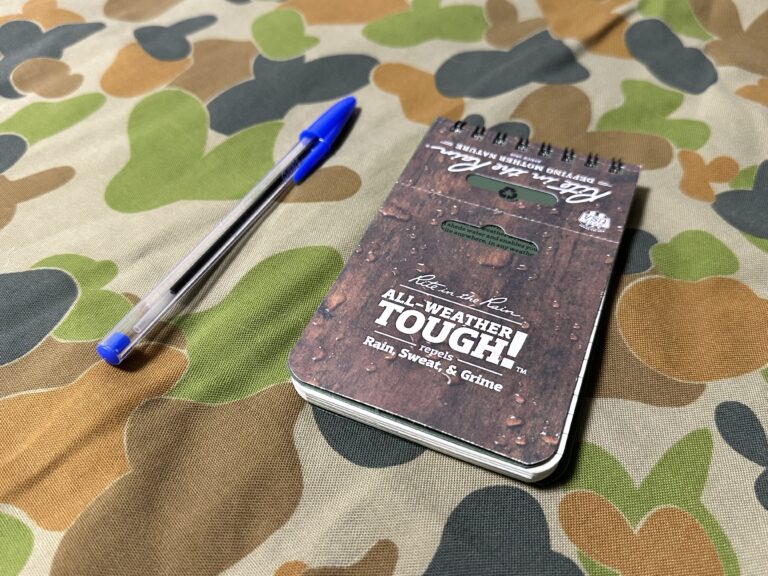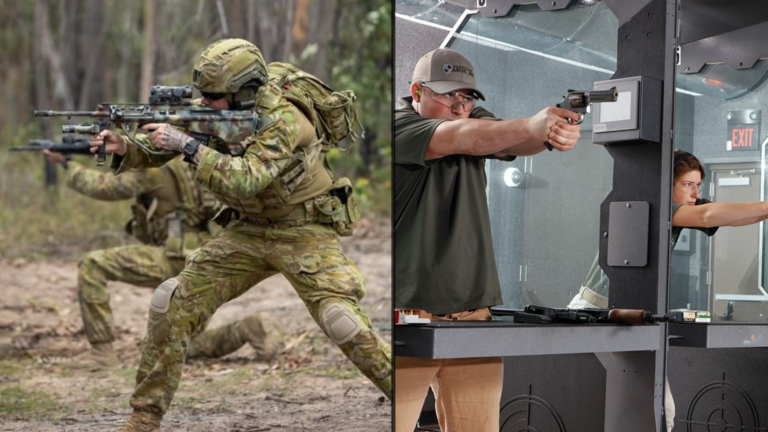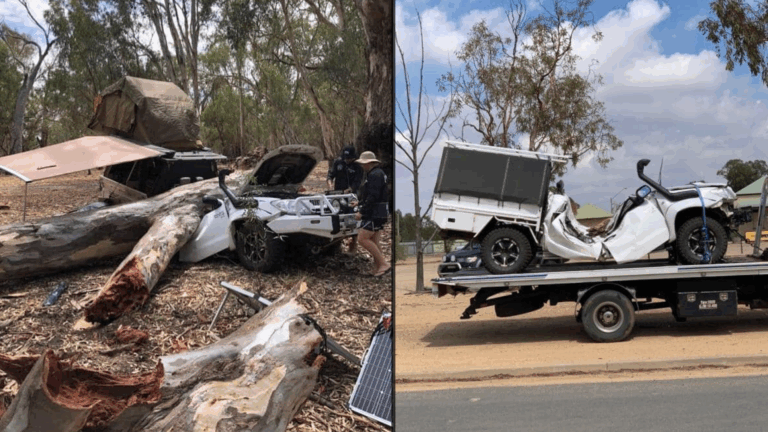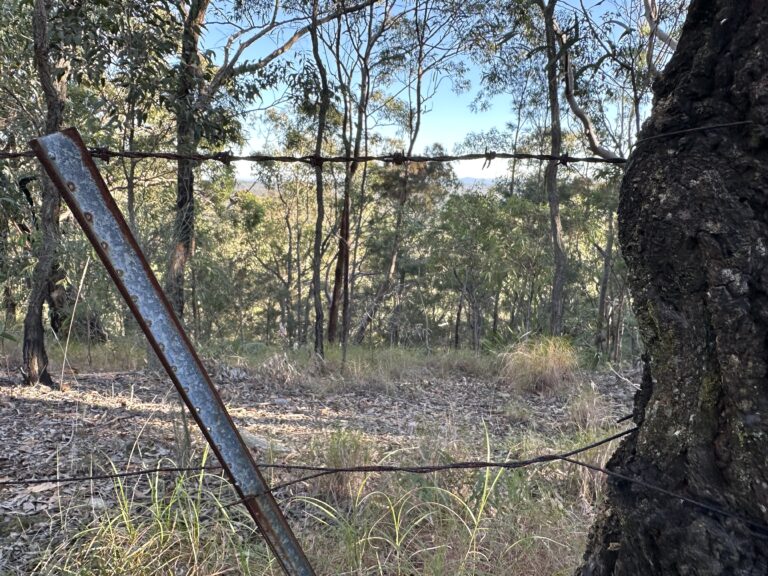In my previous article – Beginners Guide: Preparing Your Hunting Gear, I gave advice on how to select and prepare equipment for your first hunt.
Following this, I promised to put together a list of my own gear, and explain how I adjust it for a single day, or multi-day hunt. This article contains my gear list.
Single day hunt
The following list is split between the gear I carry and what is stowed away in my vehicle on a single day hunt.
Items worn or carried
- Sturdy clothing – Hunters Element or HUSS ‘Auscam’ army surplus gear. This includes a waterproof outer layer and a warmer mid-layer to ensure I am comfortable in all conditions. Pending the weather, these additional layers may be left behind in my vehicle.
- Blaze orange cap – In NSW, it is a legal requirement to wear an item of blaze orange clothing on the upper half of your body when hunting on public land. As I’m not really a fan of hats or bright colours, I’ve chosen a baseball cap to simply tick the box and remain compliant with the current legislation.
- Hiking boots – Scarpa Terra GTX. After walking for miles in heavy duty steel cap boots, I decided to ditch the cause of my blisters and invest in a pair of boots that were better suited to hunting. This was by far, one of the best purchases that I’ve ever made. If you haven’t already done so, fork out the cash and grab yourself something similar. You’ll be amazed at the difference that a quality pair of boots makes.
- Socks – Mountain Designs merino wool. This material ‘wicks’ the moisture off my skin and helps to keep my feet dry and healthy.
- Gaiters – Hunters Element ‘Pinnacle’ gaiters with stainless underfoot wires. This is worn to reduce the amount of ticks and leeches that enter my clothing. The added resistance to snake bites is a bonus.
- Gloves – Mechanix general purpose gloves.
- Firearm or bow – This changes pending my intended target.
- Ammunition or arrows – When hunting on public land, I will usually carry around 5-10 rounds of large calibre ammunition, or 3-5 arrows in a bow-mounted quiver. On private land, the quantity of ammunition I bring may vary.
- Ruck sack – Camelbak with a 3L water bladder. This pack also contains most of the smaller items in this list.
- Binoculars – Vortex Viper HD binoculars (10 x 42). These are stored in a vortex binocular harness, which also contains a few spare rounds of ammunition, some ear plugs, and a game call.
- First aid – Snake bandages (x2), ear plugs (x4 sets), a small tube of hydrolyte tablets (electrolytes), and a small container with various medications – i.e. Anti-histamines and Ibuprofen.
- Knife – Havalon Piranta-edge skinning knife and replacement blades, or occasionally, my fixed blade skinning knife from Fox Forged. The latter is stored in a custom RMK Leatherworks appendix carry sheath.
- Torch | Flashlight – Olight Warrior 3S.
- Range Finder – Leupold RX-650. This item is stored in the original pouch and is attached to my belt.
- Personal Locator Beacon (PLB) – Safety Alert PLB SA2GN. This device is used to alert emergency services in the event of a significant injury or illness. This device always comes with me on a public land hunt.
- Mobile phone – This device contains my written permission to hunt, the most up to date GPS maps for my hunting area, and various applications that track important information, such as bushfires and total fire bans.
- Snacks (x2) – Something shelf stable and calorie dense, like muesli bars or jerky.
- Game calls – Usually one or more of the following; Knight and Hale “Pack Rack”, Primos “The Can” Doe Estrus bleats, Silva fox whistle, or a generic grunt caller.
- Cigarette lighter or waterproof matches – Used for lighting camp fires or igniting gas cooking stoves.
- Cash – Physical currency is useful for purchasing supplies in regional towns and can be offered to other forest users in exchange for assistance, i.e. if my vehicle requires an emergency tow or recovery.
- Hunting licence and Firearm licence.
- Car keys.
Items stored inside vehicle
- Main meals (x2) – Go Native, Backcountry Meals, or Hart and Soul. I’m unlikely to eat these on a day trip. However, they are useful to have stashed away in the event of an emergency.
- Cold storage – A large esky that contains ice or frozen water bottles.
- Additional water – A spare Camelbak bladder with 2-3L water. This is left inside my esky and is accessible from the outside of my ute. In the event someone else is caught without water, they are welcome to open my esky and take the water.
- Hunting pack – Eberlestock “Team Elk”. This pack stores the bulk of my gear. If I am successful in harvesting a large game animal, I will return to my vehicle, empty this pack, and use it to carry the meat back to my vehicle.
- Game bags – Cloth bags that are used to keep insects, dirt, and debris away from my game meat. I use Christmas ham bags, as they’re a far cheaper than commercial game bags.
- Water-proof pack liner – After butchering an animal, the meat is stored inside a ‘game bag’, then placed inside the water-proof pack liner. Doing so makes the post-hunt cleaning process much easier, as it prevents smells and stains from contaminating my pack and the rest of my gear.
- Commercial plastic cutting board – Useful for breaking down large muscle groups of meat to prepare it for transport or cooking.
- Honing oil and a small sharpening stone – Used for sharpening knives.
- UHF radio – A UHF radio is one of the most effective ways to communicate in the forest. I’ve chosen to stick with a hardwired unit in my vehicle as it has significantly more range than a handheld unit.
- Vehicle first aid kit –
- Anti-bacterial wound cleaning solutions – i.e. alcohol wipes or antiseptic sprays. Note: Failure to treat open wounds may lead to cellulitis, which is a potentially life threatening bacterial skin infection.
- Sterilized gauze and bandages.
- Non-sterilised bandages – i.e. a triangle bandage and multiple snake bandages.
- Band-Aids, adhesive wound patches, and butterfly adhesive strips.
- Mole skin or blister prevention patches.
- Multiple sets of sterilized gloves.
- Medical tape, safety pins, and/or butterfly bandage clips.
- Saline eye cleaning solution and an “eye cup”.
- Trauma sheers (medical scissors).
- Personal medications – i.e. inhalers, heart medications, etc.
- Other medications – i.e. Anti-histamines, gastrointestinal tablets, paracetamol/ibuprofen, and water purification tablets.
- Tweezers – Used to remove ticks.
- DEET insect repellent.
- SAM Splint.
- Tourniquet.
- Israeli bandage.
- Cooking gear – Contains a Jetboil, gas bottle, BIC lighter, dish cloth and soap, and a set of ultralight hiking utensils.
- Tie down straps and recovery gear.
- Rubbish bag.
- Toilet paper.
- Entrenching tool | Folding shovel – Used to dig a pit to bury my toilet waste. Don’t be that guy who leaves toilet paper and excrement lying around for others to step in. Be an adult and clean up after yourself!
Overnight
If staying overnight, my kit contains:
- Everything in the single day list, plus –
- Sleeping bag – T.A.S. Patrol MK IV.
- Pillow – Sea to Summit inflatable Aeros ultralight pillow. Tip: Don’t fully inflate your pillow. It will be more comfortable.
- Solo swag with inner foam mattress. This is set up on the tray of my ute, with the guide rope tied to the headboard. Not only is this convenient, it minimises the amount of ticks or leeches that I have to contend with on a daily basis by raising my body and gear off the ground.
- Microfibre cloth (x2). Multi-use. These cloths can be used for anything from cleaning my gear, to giving myself a sponge bath. While the latter might sound ridiculous, don’t discount the benefit that feeling fresh and clean will have on your morale.
- Soap and extra water. Used for cleaning.
- Thongs. Useful for walking around the camp site.
- An additional pair of socks. This allows me to dry out one pair of socks while wearing the other.
Cold weather
- Sleeping bag liner – Sea to Summit reactor “extreme”.
- Insulated mattress – Sea to Summit “comfort plus” sleep mat. This provides additional insulation from the cold alloy ute tray.
- Extra warmth – Beanie or hoody.
Multi-day hunt
- Everything in the single day and overnight lists, plus –
- Breakfast – Coffee and 1-2 muesli bars, or a packet of rolled oats per day.
- Main meals – A listed earlier with a minimum of 2 meals per day, plus an additional 2 meals for emergencies.
- Additional water – 2-3L extra per day.
- Additional underwear. Self explanatory.
- Socks – 2-3 pairs, pending the length of my trip.
- Solar shower, or use the local river to wash the sweat off my body. Tip: If your solar shower isn’t warm enough, you can increase the temperature by adding some boiling water to the shower bag.
Substitutions from previous lists
- I will often substitute my solo swag for a Kings 4wd supacentre “Big daddy” swag on a multi-day hunt. This provides me with more dry space to store my gear and allows me to stretch out and rest more comfortably.
- Pending my proximity to civilisation, I may also substitute my pre-packaged dinners for a pub feed, or bring fresh food to cook at camp.
- My vehicle first aid kit is carried inside my hunting pack when butchering an animal. This more thorough kit will allow me to treat lacerations and other wounds, should the worst case scenario happen while handling my knives.
How has this list changed over time?
When I first started hunting on public land, I carried just about everything bar the kitchen sink. Most of my gear was shoved inside my pack and I’d trudge around state forests in search of game or signs of animal movement. While the added weight in my pack was great for my physical fitness, I am confident that it stunted my learning progress due to the impact on my mobility and the increased fatigue.
Over time, I culled down the weight in my pack and thought it was at an acceptable level. Then one day, I went on a hunt with a mate near the Watagans. He carried a light weight Camelbak and a rifle, while I carried my usual pack set up and my own firearm. Within 30 minutes of following him through the steep terrain I was absolutely smoked. From what I could tell, he had barely broken a sweat. That was the point where I realised that I was weighing myself down with unnecessary gear. From that point onwards, I decided to take a page from his book and only carried what was required – Water, a rifle (or bow), minor first aid supplies, and a few other smaller items. Everything else could be retrieved from my vehicle, if required.
These days, if I am successful on a hunt I will confirm the animal is down, log it into my GPS mapping software, then retrieve my larger pack and butchering equipment to process the animal. If you find that you’re constantly gassed out while scouting a forest, I suggest you scrutinise your gear and determine what you can safely do without.
